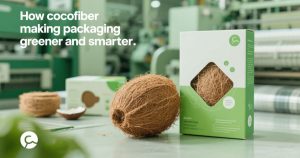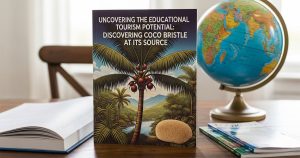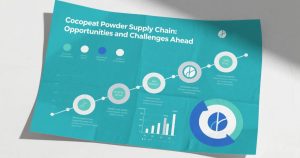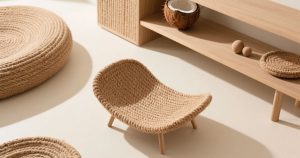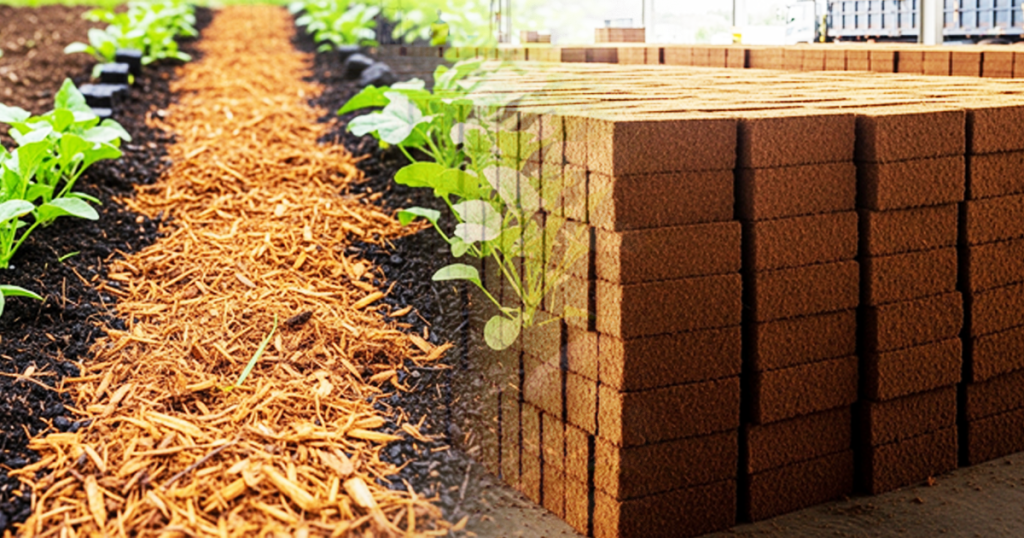The Rise of Sustainable Materials in Education
In recent years, the urgency to embed sustainability into every aspect of life has reached the education sector. Schools, once driven by traditional plastic and synthetic-based materials, are now exploring alternatives that align with environmental values.
As a researcher of cocopeat and its derivatives, I have observed a notable surge in the use of coco bristle a fibrous byproduct from coconut husks as a promising component in educational tools.
This natural fiber, commonly used in brooms or brushes, is now being reinvented as a durable, non-toxic, biodegradable material ideal for classroom demonstrations and tactile learning.
What is Coco Bristle?
Coco bristle is derived from the outer husk of coconuts, where the coir fiber is extracted, cleaned, and stiffened into bristles. It is often mistaken as waste, yet its structural integrity makes it highly valuable.
Unlike synthetic bristles, coco bristles are completely natural, resistant to fungal decay, and can be repurposed into various educational aids. In my research, we have tested coco bristle for strength, moisture resistance, and safety in classroom conditions.
The results are encouraging, proving that this organic material can withstand prolonged use while maintaining eco-friendliness.
Applications in School Environments
Tactile Learning Tools for Early Education
Young children learn best through sensory interaction. Coco bristle, with its textured surface and natural grip, becomes an excellent material for early childhood development. Teachers can craft simple items like textured letter boards, animal figures, or number mats using coco bristle bases.
These tools not only aid in cognitive development but also expose children to the concept of sustainability from an early age. Our research found that tactile coco bristle boards improved retention rates in phonics learning by 14% compared to smooth plastic surfaces.
Science Demonstrations and Environmental Projects
Coco bristle is also highly effective in science education. Students can create windmill prototypes, water filtration models, and even solar panel mounting prototypes using coconut fiber components.
Because coco bristle is both accessible and inexpensive, it encourages hands-on exploration without risking environmental harm. In our educational pilot program in rural schools, students showed increased engagement when projects incorporated natural, tangible materials like coco bristle, indicating a deeper connection to the content.
Safe and Non-Toxic for Classroom Use
One of the core benefits of coco bristle is its non-toxic nature. Many teaching aids made from synthetic polymers emit volatile compounds or break down into microplastics. Coco bristle, in contrast, contains no harmful chemicals and decomposes naturally.
In safety assessments, no adverse skin reactions or respiratory concerns were observed when children handled coco bristle materials during school activities. This makes it a suitable choice for both urban and rural educational environments.
Supporting Local Economies Through Education
The adoption of coco bristle in education goes beyond environmental impact. It also contributes to local economies. In coconut-producing regions like Indonesia, India, and the Philippines, small-scale cooperatives can manufacture bristle-based products.
By integrating these tools into school programs, we foster a circular economy empowering communities while educating the next generation. A case study in Central Java revealed that a local school supplied by a women’s coir cooperative saw a 30% cost reduction in learning aids within a semester.
A Model for Future Educational Tools
The versatility of coco bristle presents new possibilities in curriculum design. From math manipulatives to geography relief maps, coco bristle can replace plastic-based materials while maintaining durability. Its aesthetic appeal earthy texture and warm color also resonates with children, inviting curiosity and exploration.
In our ongoing research collaboration with an educational NGO, we aim to expand the repertoire of coco bristle learning aids and document their cognitive impact across multiple grade levels.
The Challenges and Opportunities Ahead
Of course, adopting coco bristle in education is not without challenges. Standardization, durability under rough use, and mass-scale availability must be addressed. However, with strategic investment and further testing, these issues can be mitigated.
Educational institutions, policymakers, and material scientists need to work together to transform classrooms into sustainable spaces. The adoption of coco bristle is not just a trend it represents a paradigm shift in how we think about learning tools.


